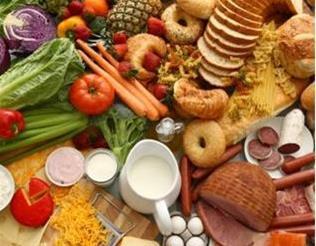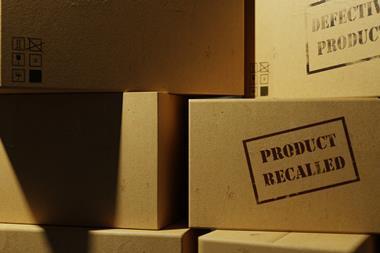In an industry where safety is paramount, companies in the food and beverage sector face unique challenges. John Turner, director of crisis management, global claims services business at McLarens explores how firms can tackle the threats
With significant losses and the complexity of global supply chains, the food and beverage industry is exposed to an ever-growing array of risks.
But what are these risks, what is the impact when something goes wrong, and what are the solutions?

What are the risks?
Food and beverage manufacturers face a multitude of risks, but arguably front of mind at present are three significant emerging macro level challenges.
First, the growing impact of climate change on food safety and supply is a critical risk food manufacturers face.
Climate change has and will continue to alter weather patterns. It is or will force food and beverage companies to shift sourcing of growing and raw material processing to different locations and suppliers.
For instance, take Sussex in Southeast England, which has become a wine growing region where it once would have been near impossible to produce sparkling wine of such quality.
Such an example is a microcosm of a global issue that will drastically change the agricultural landscape and, unlike the above example, many changes will be negative.
“The growing impact of climate change on food safety and supply is a critical risk food manufacturers face”
Food and beverage companies must understand the journey of their ingredients and products from farm to fork. To know their farmers, local suppliers, and shipping providers is to understand the risks to which they might be exposed.
However, when growing locations are changing so rapidly due to climate shifts, it is difficult to achieve this understanding. This situation diminishes the ability to manage risks effectively, presenting significant challenges to the industry.
Second, heavy metal contamination of food and drinks is becoming a more common and growing risk.
For instance, there is a current case of a recall where cinnamon, used in production of apple sauce for children, had lead contamination. Such contaminants are toxic to human health, especially for children.
Heavy metal exposures can originate from areas with a history of heavy industry or from farms where such deposits are naturally occurring. This can contaminate crops and livestock, becoming a major concern in the food supply chain.
“Heavy metal contamination of food and drinks is becoming a more common and growing risk.”
With better traceability, and increased regulatory focus, we are seeing more losses from heavy metal contamination.
Third, per- and polyfluoroalkyl substances (PFAS), a widely used and long-lasting family of “forever chemicals,” are found in many agricultural environments and the related food supply. These chemicals can infiltrate water supplies and soils, entering the food supply via contaminated crops and livestock.
The health risks associated with PFAS are still being analysed, but the consensus is clear: we should avoid these harmful chemicals in our food supply.
Of course these new risks add to the traditional scene of navigating microbiological, allergen, foreign material and chemical risks which remain extremely significant and tough to manage.
What are the Implications?
The rise in claims reflects the evolving nature of risks in the food industry. These claims are a barometer of the challenges faced, from climate change to emerging contamination risk issues.
While we are not seeing climate change claims as yet, industry experts are highly concerned and analysing how to manage such macro level risks from source to table.
Global food and beverage companies are already focused on climate change and food supply risks. It will not take too long before we see claims.
“Companies need to know how to manage crises effectively, as their response can significantly impact their reputation and financial stability.”
Food and beverage manufacturers are recording losses from heavy metals and PFAS contamination. Such issues are leading to claims that were non-existent a few years ago.
For manufacturers, such losses can be catastrophic in products such as baby and toddler food, where the reputational impact is immense.
As a result, companies need to know how to manage crises effectively, as their response can significantly impact their reputation and financial stability.
What are the solutions?
Given the range and severity of these risks and the potential for claims and losses, firms should take a proactive approach to risk management.
First, cultivating a strong food safety culture is essential. Such a culture must sit above all else.
Here, good culture is about more than compliance. It is not about ticking boxes and meeting an auditor’s requirements.
Instead, it is about ingraining food safety into the firm’s ethos and identity every single day. This culture must be evident at all levels, from the boardroom to the production floor.
“Given the range and severity of these risks, firms should take a proactive approach to risk management.”
Second, effective supply chain risk management is crucial.
Here, supply chain management often involves understanding where raw materials come from and the inherent risks in these locations including local levels of regulatory oversight. Companies must work closely with suppliers to monitor and control these risks.
Data analysis also plays a vital role in identifying and managing risks in the supply chain. It helps pinpoint the sources of risk, often in ways that are not immediately obvious, allowing companies to allocate resources more effectively and make smarter decisions.
For instance, it can be easy for risk managers to focus on historic risks. But this might hide other issues which put the business at risk but are not obvious. Proper data analysis can help identify such hidden risks.
“Companies must work closely with suppliers to monitor and control these risks.”
Last, insurance plays a significant role.
Through net premium allocation from the standalone product recall insurance market, food and beverage companies can access risk management and crisis consultants before an issue hits to understand how to mitigate such risks.
These consultants are critical for smaller companies, which may not have the same resources as their larger counterparts to manage food safety effectively.
As loss adjusters, we plan and respond to these risks and issues. We are increasingly involved in helping companies plan for the handling of such claims which often present cash flow crises. Our role is to make the process efficient and smooth, delivering value and helping both risk managers and their insurers.














No comments yet